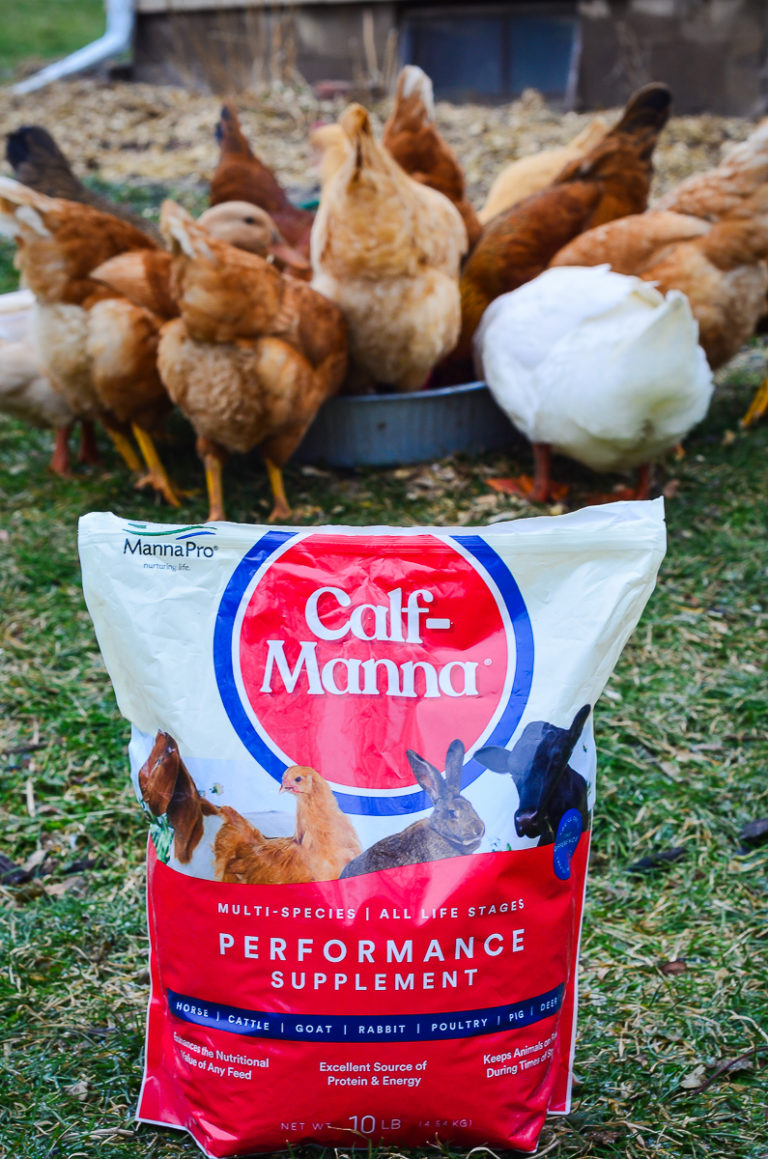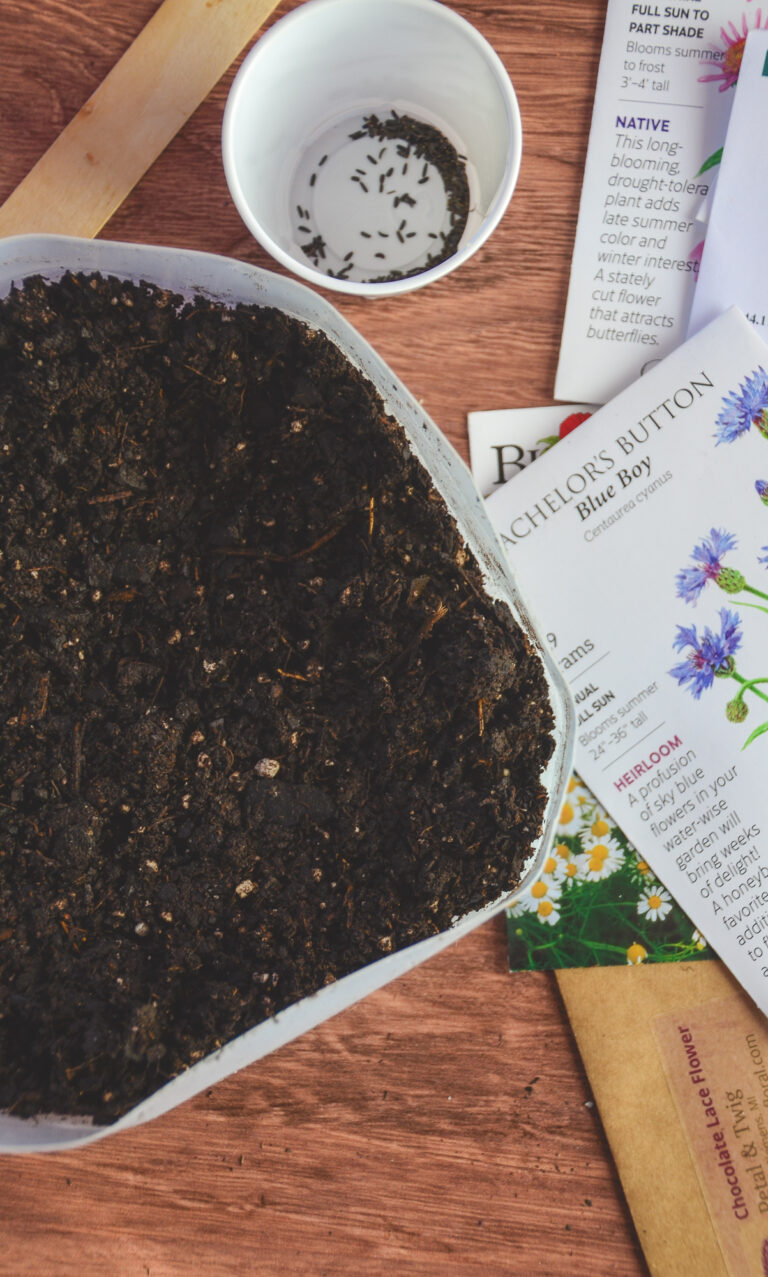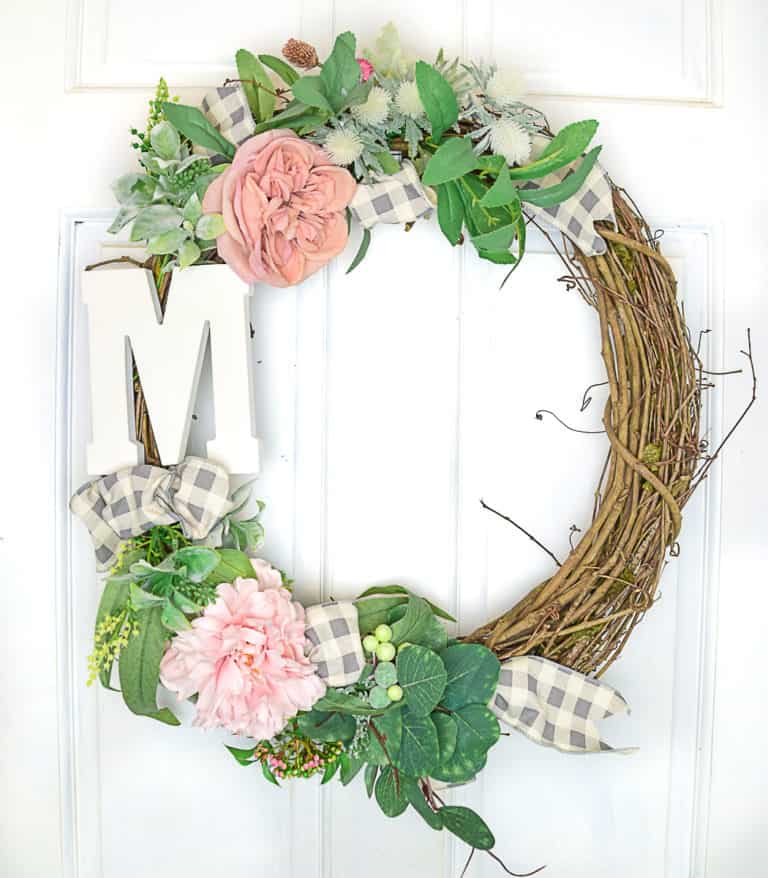How To Stock A Pantry
Our great grandparents knew how to cook wholesome and delicious food from scratch and manage their ingredients and supplies in a way that took full advantage of inexpensive and versatile food items. Having a well-stocked pantry or food stockpile was crucial for our grandparents. Today we can apply to same principles to reduce our dependence on expensive convenience foods and create nutritious meals for our families.
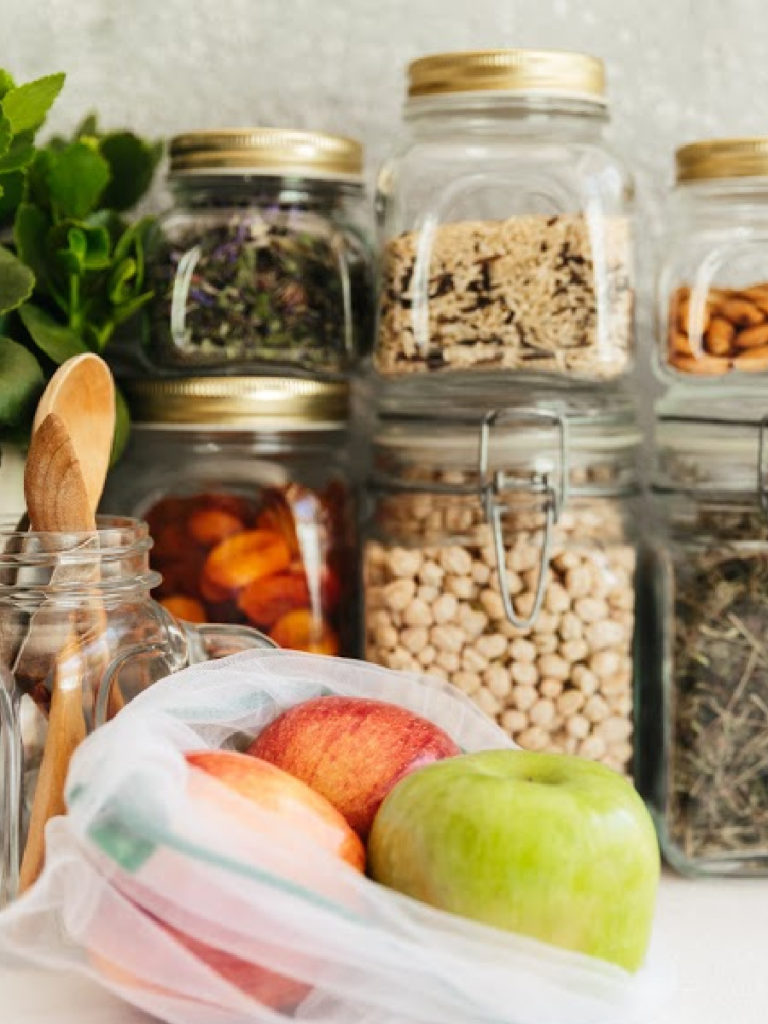
We can follow our grandparent’s example and transform our pantry into a helpful supply of ingredients and foods bought at a bargain.
Having a well-stocked pantry can be a massive timesaver during busy seasons, save money in the long term, provide peace of mind during an emergency, and live a simpler life. To help you on your journey, I’ve put together this guide to help you stock a simple pantry on a budget.
Table of Contents
- Why Would You Want to Stock a Pantry and Store Foods Long-Term?
- Where to Set Up a Pantry & Low-Cost Options Container Options
- Stockpiling & Food Storage
- How To Stock A Pantry on a Budget
- How To Manage Your Food Storage Stockpile in Your Pantry
- Kitchen Pantry Staples To Stock Up On
- How Long Will Pantry Items Last?
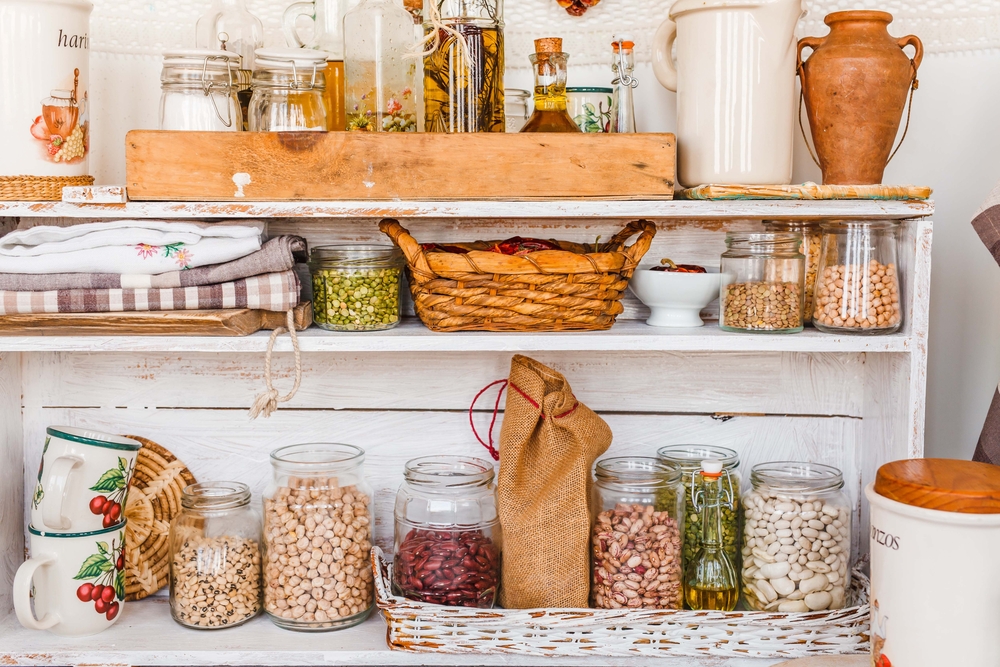
Why Would You Want to Stock a Pantry and Store Foods Long-Term?
There are many advantages to storing more than a week’s worth of food, ingredients, and supplies. The appeal of keeping a well-stocked pantry for me has always been rooted in a desire to reduce my trips to the grocery store.
Some people want to store food for long-term survival, while others may want to be prepared in case of emergencies. For example, in 2020, when we were all urged to stay home as much as possible many of us stretched our trips to the store as long as possible. Having a pantry stocked with staples was a significant step towards self-reliance and reduced dependency on frequent trips to the grocery store.
Whatever the reason, building a pantry and food stockpile is a worthwhile pursuit that has the potential to provide security, savings, and peace of mind.
Many people are under the assumption that pantry stocking is expensive. In reality, it doesn’t have to be! There are many items you can purchase in bulk and store for long periods of time that will save you money over buying these same items from the grocery store each week or month.
If you’d like to cook from scratch more, save money at the grocery store, and be prepared for emergencies, a well-stocked pantry will be your best friend.
Where to Set Up a Pantry & Low-Cost Options Container Options
You might already have a built-in pantry in your kitchen, but If you are like me and live in an old farmhouse with minimal storage areas, you may be wondering where you will put a pantry. The good news is that you can store appropriately sealed food almost anywhere. You can set up a pantry in your garage, under your bed, in a closet, or anywhere you have some spare space. I actually have my food stockpiles stored in a couple of places.
My main stockpile area is a small under-the-stairs type area near the kitchen. I store unopened items that haven’t been needed yet in this area. Because this space is such an odd size and shape, I have worked out a system of storing the more oversized, less frequently needed items in the back and smaller items near the door. This crawl space is where you will find my #10 sized tin cans of dried beans, rice, and flour, along with case lots of items.
When I need something for daily use, I remove it from the under-stairs storage area and transfer it to a smaller, more manageable sized storage container for storage in my kitchen cupboard. My kitchen cupboard that acts as my pantry
And finally, my large chest freezer in my basement stores specialty flours, preserved veggies from the summer harvest, meats, and homemade freezer meals. I also use my freezer as a temporary holding area for newly bought dried bulk food items. I place things like oats, flour, dried beans, and rice in my freezer for 2-3 days. Freezing dry items will kill pantry moths and other pests or insects that might hide in new purchases.
Once you have your storage areas figured out, you will want to build your supply of storage containers. There are plenty of pantry storage options available in stores, but I prefer thriftier options.
I strongly recommend glass storage containers. I learned the hard way that pantry moths could easily invade sealed plastic bags and boxes. Glass offers a non-porous surface that doesn’t absorb odors like plastic and can be safely washed at higher temperatures in your dishwasher without melting or warping. Glass storage containers are also to best defense against pantry moths and other pest and insects that may infest food stores.
I like to reuse glass jars from items I’ve purchased like salsa, jams, and sauces. One of the best features about these glass jars is that they are safe to reuse indefinitely, and standard canning jar lids usually fit for a cohesive look. One thing to keep in mind, though, the jars that contain sauces, jams, and jellies from the store are made with thinner glass, making them unsafe for use as home canning containers. If heated too quickly or too much, these thin-walled jars could shatter, but they work great for storing your dry goods in your pantry. I have also found great deals on glass jars at thrift stores.
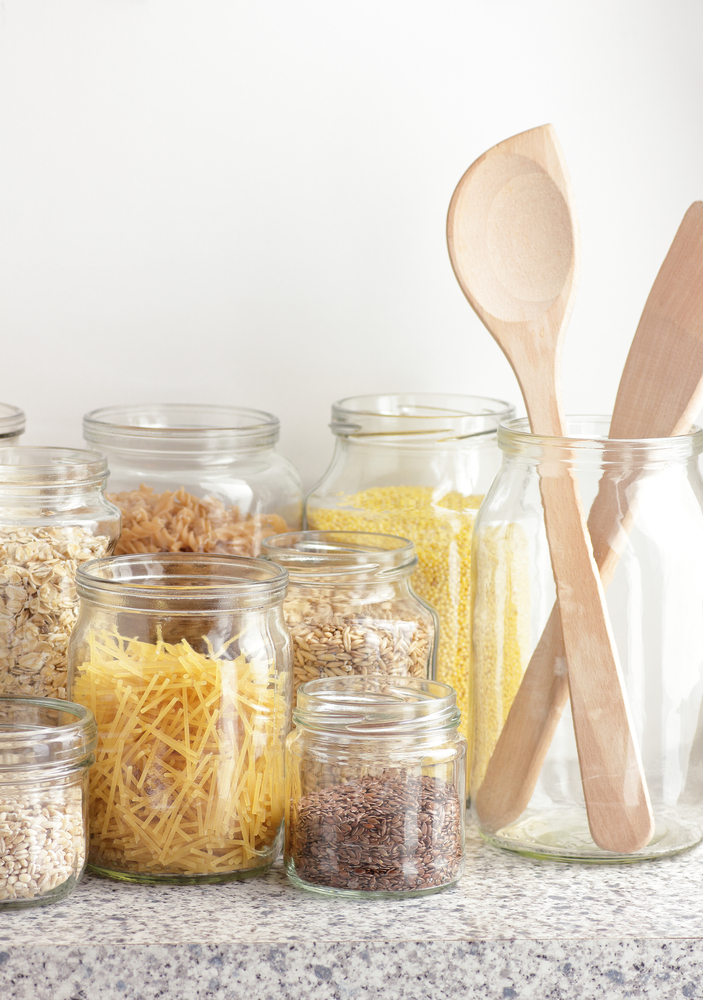
Stockpiling & Food Storage
Don’t be alarmed. We aren’t going to be building a doomsday prepper bunker full of stockpiled food. We are talking about figuring out what we eat and adding those things to the pantry over time. The terms “Food Storage” and “Stockpiling” can bring to mind visions of ready-to-eat meals, canned goods, and other provisions that can last for years. And while those items are certainly a part of the process, that mindset isn’t what we’re going to be covering in this post. We are focusing on stocking a pantry to support homemade from scratch meals.
Our focus will be on transforming your pantry into an affordable supply of ingredients so you can cook from scratch when time is short and save money in the long run at the grocery store.
It’s not as difficult or daunting as it may seem, I promise!
One of the first things you should do is get a handle on what your family eats. What are the favorites? What ingredients do you need to cook them? Keep a list of items that you use regularly. Then, take inventory of what you currently have and what you need, and stock your pantry with those foods. You can think of your freezer as an extension of your pantry and stock up on frozen foods also.
How To Stock A Pantry on a Budget
If stocking a pantry while groceries prices continue to climb at stores feels overwhelming, I’ve got a few tips and ideas for you!
- Buy in bulk– you can often purchase packaged dry goods such as pasta, rice, and beans at bulk food stores for a fraction of the price of canned. I love to shop at Amish and Mennonite bulk food stores for bulk dried goods.
- Freeze, can & dehydrate foods yourself– I love to dehydrate herbs grown in my garden, freeze bumper crops of bell peppers, and make jams and jellies from fruits from the farmers market. Remember, you don’t have to start out doing it all. Begin where you find the most joy.
- Shop Sales– Scan the sale flyers for the stores in your area. Sales typically run in cycles that repeat every 8 to 12 weeks. Canned soups usually go on sale around back-to-school time, baking essentials around the holidays.
- Use Coupons– You might be surprised at the coupons that come out of a newspaper. The key with coupons is not to buy things you won’t use because “it’s a good deal.”
- Use a cashback app like Ibotta– you can use this app to get a rebate on many grocery items.
- Shop Around– Pay attention to which of your local grocers and stores has the best deals on certain types of foods.
- Set Aside a Small Amount of Money Each Week to purchase pantry items. I like setting aside $5-$10 a week to add supplies to my pantry. If you are already shopping at a discount store like Aldi, this is super easy! Typically, I can purchase a flat of 12 cans of beans for around $6. Because the stores in my area don’t have case lot sales, I find picking up a case of essentials at Aldi to be the most manageable and budget-friendly way to stock up.
How To Manage Your Food Storage Stockpile in Your Pantry
Once you transition from buying what you will need in a specific week to months worth of food, you will need to spend a little time looking over your inventory. About every three months, or when I add new stock to my supply, I go through my main stockpile area, check dates and quantities, and make sure there are no signs of bugs or other pests. I also rotate my items. Rotating your stock means you are consuming the oldest items first.
How you keep track of your inventory is a personal preference. I like to keep a paper tacked the door of my storage area with a list of all my supplies and expiration dates. Spreadsheets and notebooks work just as well, just find a system that works for you, and keep it updated!
Kitchen Pantry Staples To Stock Up On
Pasta and grains
- Long pasta, short pasta, tubular pasta — whatever you cook with and your family enjoys.
- Grain-wise, rice is an obvious choice (brown rice, white rice & Jasmin), but don’t forget whole and ancient grains like barley, bulgur, and quinoa for delicious grain bowls.
Canned and Jarred Goods
- Canned Tomatoes -Tomato sauce, diced tomatoes, and tomato paste are all useful for making sauces, and casseroles, and soups.
- Coconut milk for enhancing soups and curries, deserts,
- Stocks and Broths– You can make your stocks quickly and freeze them for later, but I like to keep a few cartons of chicken stock and beef stock in the pantry as a backup.
- Canned vegetables– Canned vegetables are a convenient, healthy addition to your pantry. They can be used in many dishes such as soups, salads, or pasta dishes when you don’t have fresh veggies available! We recommend stocking up on canned carrots, green beans, corn, peas, and more.
- Canned beans – Beans are a great protein source. I stock canned and dried beans in my pantry. Canned beans are fairly inexpensive & great when you don’t have time to prepare dried beans.
- Tuna fish – Tuna is always a good idea to keep on hand. Canned fish is easy to use in salads, sandwiches, or pasta dishes that are fast and easy meal options when you don’t feel like cooking but want something healthy.
- Pickles
- Pumpkin Puree (great for baking, soups, and you can even use it as a treatment for dogs with upset stomachs.
- Nut Butters (Peanut Butter, Almond Butter or whatever you like)
- Jams & Jellies
- Soup Base: I like Better Than Bouillon, chicken, beef, and vegetable.
*Refrigerate after opening.
Dried Beans and Legumes
Nutritious and long-lasting, beans can be eaten on their own or added to soups, stews, salads, stir-fries, and even used as a frugal meat alternative in some dishes. I know I listed canned beans above, but I do stock both canned and dried beans in my pantry.
- Dried beans– Dried beans are a great addition to your pantry as they’re inexpensive and can be used in many dishes, from salads to soups! We recommend stocking up on dried black beans, pinto beans, and other varieties, depending on what you like the best.
- Legumes like lentils, split peas, and black-eyed peas are rich in fiber and protein. They also contain several key vitamins and minerals. Use them to make protein-rich salads, or add them to soups or stews.
Baking Supplies
Baking supplies are the backbone of my pantry, because I make a lot of baked goods and mixes. Making homemade baking mixes and seasoning blends is a great place to begin if you want to live a more from scratch lifestyle.
- Flour
- Sugar (brown, white, and confectioners)
- kosher salt
- Baking soda
- Baking powder
- Cocoa Powder
- Corn starch
- Yeast
Oil, Vinegar & Sauces
- Olive oil is excellent for low heat cooking and salad dressings. Canola or vegetable oil is better suited for high-heat cooking like frying.
- White vinegar is excellent for cooking and around the house. You can use it in marinades and in canning recipes, but it is also an effective cleaner that easily tackles tough cleaning jobs.
- Red wine vinegar is great in marinades and homemade salad dressings.
- Apple cider vinegar is relatively cheap to buy and will store indefinitely.
- Soy Sauce*
- Hoisin sauce if you are a fan of stir fry
- Worcestershire Sauce*
- Sriracha*
- Mustard
- Mayo*
- Ketchup*
*refrigerate after opening
Herbs & Spices
Herbs and spices will give flavor to your homemade meals, don’t underestimate their importance! Check out this post for my tips on buying herbs in bulk to save money.
- Salt
- Whole Peppercorns
- Basil
- Oregano
- Thyme
- Cumin
- Crushed Red Pepper
- Cayenne Pepper
- Smoked Paprika
- Cinnamon
- Curry Powder
- Chili Powder
- Garlic Powder
- Cocoa Powder
- Vanilla Extract
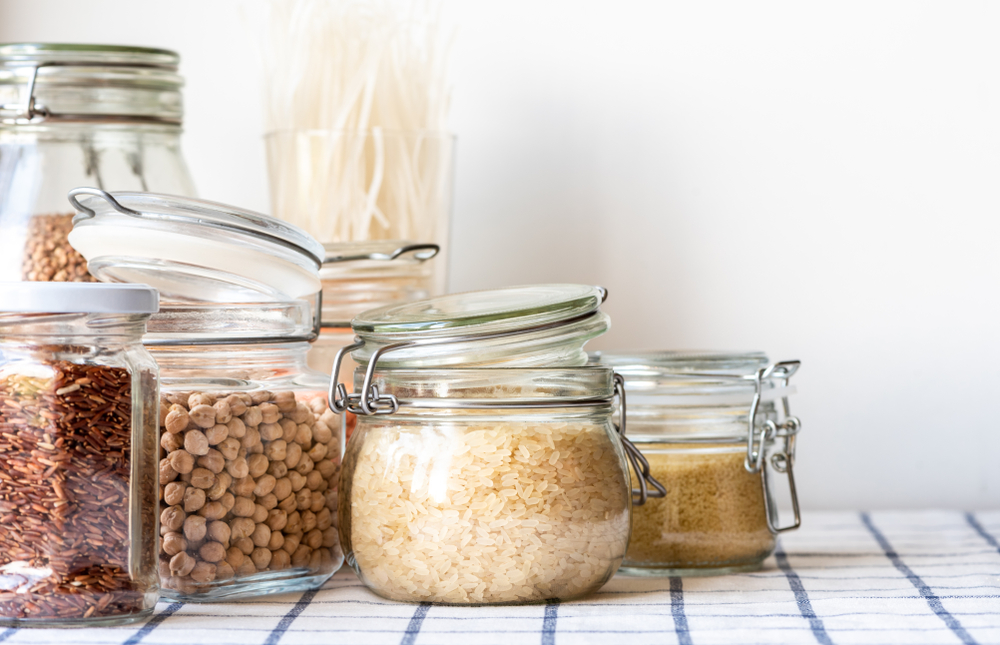
How Long Will Pantry Items Last?
This will depend on the type of food. The USDA has deemed certain foods are good indefinitely, as long as they are stored in an air tight container. Those foods are:
- pure vanilla extract
- pure maple syrup
- apple cider vinegar
- distilled white vinegar
- honey
- powdered milk
- instant coffee
- white rice
- cornstarch
- baking soda
- sugar
- salt
With canned goods, you can expect a shelf life roughly two years before you need to replace them. Packaged foods like pasta or oatmeal typically last for a year without needing to be replaced.
Some items will need to be rotated more often than others. Pay close attention to the expiration dates when you purchase your items and when you are routinely cleaning and organizing your pantry.
More Resources & information on healthy eating and living well on a budget
- Self-Sufficiency Projects To Keep Your Family Fed and Entertained
- Kitchen Items you should buy at thrift stores
- Meal Theme Nights to Break You Out of Your Dinner Rut
More Resources & information on healthy eating and living well on a budget
- If you are serious about putting together a long-term food storage system, I highly recommend you check out Food Storage Organizer.
- If videos are your thing, Kimmy at She’s in Her Apron on Youtube has lots of good videos on Food Storage.


